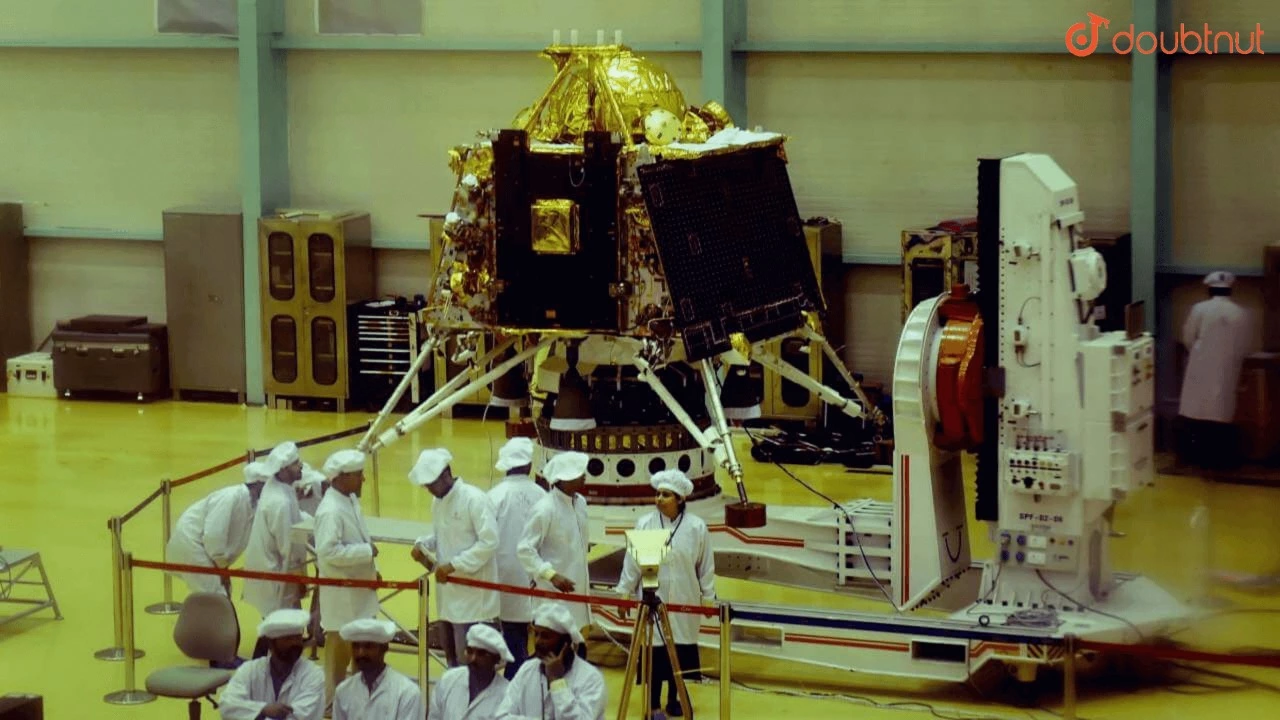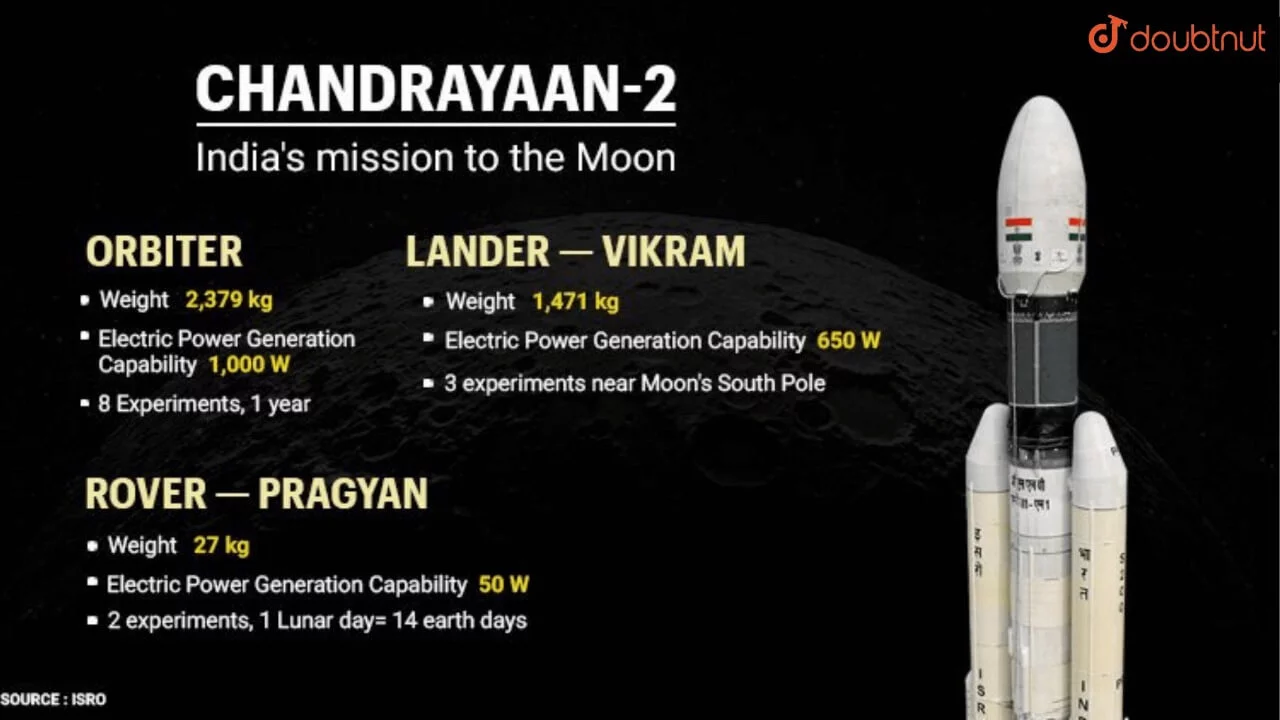Successful Launch of Chandrayaan 2 estimated to touch down the surface of moon on September 7th
Geosynchronous Satellite Launch Vehicle Mark III (GSLV MK-III) aka ‘Bahubali Rocket’ and ‘Fat Boy’ has injected Chandrayaan 2 from Shriharikota this afternoon at 2.43pm with a dream of placing a rover on the moon. Lander ‘Vikram’ is carrying the rover ‘Pragyaan’ is scheduled to touch the surface of the moon on September 7, 2019. Currently, Chandrayaan-2 is already on its journey to explore the unchartered lunar South Pole.
Highlights of Chandrayaan-II Mission
- Chandrayaan-2 launched from the Satish Dhawan Space Centre, Shriharikota. The space centre was named after former ISRO chairman Satish Dhawan.
- The previous Chandrayaan-2 launch was scheduled for July 15, 2019. It was aborted due to disturbance observed in the pressure of rocket fuel at the time of launch.
- Chandrayaan-2 will place a rover on the Moon on September 7, 2019.
The INR 978 crore mission Chandryaan-2 was launched from Satish Dhawan Space Centre, approximately 80 km from Chennai. The success of Chandrayaan-2 will prove out to an important milestone in a giant leap towards space exploration. Moon is earth’s closest cosmic body in space. It is also a promising testbed at which Chandrayaan-2 mission endeavours to find evidence of water molecules on the moon. It may be recalled, 10 years ago, the Chandrayaan-1 mission has made the path-breaking discovery of the presence of water in the exosphere of the moon on its surface and also sub-surface. With Chandrayaan-2, ISRO hopes to gather the sample of primordial water towards further understanding the origin of water on various cosmic bodies including the earth. The mission aims at fostering new-age of innovation and discovery in the understanding of space. Also, accelerate the development of technology, endorse global associations and inspire generations yet to come.
According to a spokesperson of ISRO, "Evidence for water molecules discovered by Chandrayaan-1, requires further studies on the extent of water molecule distribution on the surface, below the surface and in the tenuous lunar exosphere to address the origin of water on the moon."
Delayed, but Successful
Mission Chandrayaan-2 spacecraft was initially scheduled for flight at 2.51 a.m. on July 15, 2019. However, the flight was aborted due to the detection of a technical snag an hour prior to the rocket lift-off. The ISRO later resolved the defect, and India’s most ambitious space exploration mission, Chandrayaan-2, took a flight today.
Lander Vikram: What’s in a name?
A lander helps the rover and other core-satellite machinery to land on the surface of the moon. Chandrayan-2 lander namely “Lander Vikram” has been titled after father of Indian space research programme Dr Vikram A. Sarabhai. Weighing approximately 1,471 kg, it has the capability of generating 650 Watt power. It will be carrying the rover 'Pragyaan'. It is designed to operate for one lunar day which is equivalent to about 14 earth days. It is devised to perform a soft landing on the lunar surface at a descent velocity of 2 meters/second. It will land in a high plain between the two craters, Manzinus C and Simpelius N, at the latitude of about 70.9° South 22.7° East Alternate Site: 67.7 ° South 18.4° West, of the Moon. The lander has the ability to communicate with the Orbiter, Rover Pragyaan and IDSN (Indian Deep Space Network) at Byalalu near Bengaluru. Equipped with an instrument to measure lunar seismic activity, it will also observe the Moon’s thermal conductivity and temperature gradient. Lander Vikram is also carrying The Langmuir Probe payload. It will conduct ionosphere analyses on the exterior of the moon.
Associated Technological Expertise of Lander Vikram:
- High-resolution camera
- Lander Hazard Detection Avoidance Camera (LHDAC)
- Lander Position Detection Camera (LPDC)
- An 800 N throttleable liquid main engine
- Attitude thrusters
- Ka-band radio altimeter (KaRA)
- Laser Inertial Reference & Accelerometer Package (LIRAP)
It must be recalled that the engineering prototypes of the lander Vikram started undergoing aerial and ground tests in October 2016, in Challakere in Karnataka's Chitradurga district. Till now almost 10 craters were generated by ISRO on the surface to help evaluate the capability of the lander's sensors to pick a landing site.
How it all happened?
It was necessary to test the rover ‘Pragyaan’ before sending it into space. ISRO wanted to test the rover, on a substance that closely resembles the moon’s soil. Lunar surface has a different texture of soil and is covered with craters and rock. Purchasing the lunar soil-like substance from NASA could have been a costly affair for ISRO, it was then Indian scientist starting looking for a local solution. Several geologists confirmed ISRO that near Salem in Tamil Nadu there were "anorthosite" rocks that may have similar topographies of moon regolith. The ISRO finalized to take the "anorthosite" rocks. The rocks were crumpled to the requisite size and moved to Bengaluru. Ultimately, the test was conducted.
About Geosynchronous Satellite Launch Vehicle Mark III (GSLV MK-III) aka ‘Bahubali Rocket’ and ‘Fat Boy’
The brainchild of a scientist of Indian Space Research Organization (ISRO), the GSLV Mk-III was given nickname as ‘Fat Boy’ by the ISRO scientists. However, later on, the Telugu media started referring to GSLV MK-III as the Bahubali of ISRO. Why? Because similar to the south Indian film story ‘Bahubali’ this enormously powerful rocket GSLV MK-III, that itself weighing 640-tonne has the responsibility-taking 3.8-tonne Chandrayaan-2 spacecraft on his shoulder and leading it towards the moon; just like the protagonist of the film Bahubali lifted a heavy Shivlingam in one of its scenes.
It is a three-stage rocket. Here is how it works:
First stage:
It consists of 2 strap-on tanks close-fitting to both sides of the rocket. The tanks contain solid fuel. In the first stage, the fuel is burnt, providing the initial thrust to fly out of earth's atmosphere. The strap-on tanks remain serviceable for 140 seconds after launch.
Second stage:
It consists of the core booster that goes up in flames 114 seconds after lift-off. The core booster burns liquid fuel. It is the primary source of thrust after detaching from the strap-on tanks. It prevents the fall back of the rocket at around 140 seconds after launch.
Third Stage:
It is a cryogenic engine that provides the minute thrust. Installed in the top part of the GSLV Mk-III, it functions after the liquid core booster separates from the rocket.


